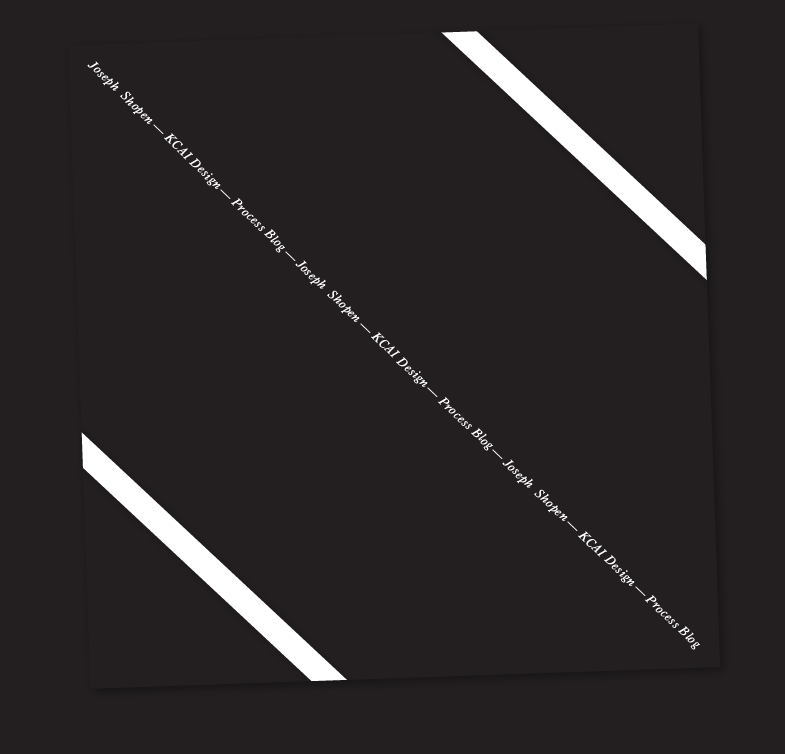Tuesday, August 31, 2010
Monday, August 30, 2010
reading:rhetoric, Bonsepie
________________
Saturday, August 28, 2010
project I (part 2)
Thursday, August 26, 2010
EARL KLUGH research

EARL KLUGH
Earl Klugh's enthusiasm for the guitar was encouraged by the increased attention given to folk music in the 1960s. The young player was particularly inspired by the popular trio Peter, Paul, and Mary, as well as by folk troubadour Bob Dylan. In addition to his interests in these performers, Klugh listened to a great deal of Spanish guitar music. As writer Bill Milkowski explained in Down Beat ( http://www.downbeat.com/), Klugh's appreciation for folk playing and Spanish guitar led him to experiment with a method of fingerpicking that he applied to the popular songs of that time, especially those by the Beatles.
It was at this point, in his middle teenage years, that Klugh discovered Chet Atkins. As Klugh stated in Down Beat, "I saw him on television, and he changed my whole concept of playing. He was the only person I ever heard up to that point who played the instrument like I wanted to hear it played, playing chords and melody simultaneously with a finger-style technique. In the next eighteen months after seeing him on TV, I bought forty of his albums and listened to them until I was able to copy from them."
Despite Klugh's collaborations with various jazz artists and the media's categorization of his work, as a solo artist he does not consider himself a jazz musician. He explained in Guitar Player, "There is an element of jazz in my music, but basically it's pop. I have trouble with the label 'jazz.' It's a convenient way to market an individual. Also, jazz is a label that's easily hung on a black musician.
In 1993, Earl published Sounds and Visions, Vol. II. Showcasing what Downbeat called "his trademark classical guitar sound".
As reviews of Klugh's music indicate, his listeners are attracted to these melodies and the ways in which he makes his guitar "sing." While this aspect of his playing has indeed garnered a large following, it has not always inspired critical praise. This lack of critical approval, Klugh admitted in Guitar Player, is due primarily to his conscious decision to sell records rather than just showcase his playing ability. The choice reflects the musician's business savvy and the skills he has acquired working with established artists. As he maintained in Guitar Player, learning what sells and what doesn't has allowed him to continue to play. And despite Klugh's concerns with the market, he is insistent on playing the kind of music he likes. Given the enormity of his yield and the success he has achieved, it is clear that a large number of record buyers share his tastes.
Earl has been very successful with his albums, getting many #1 hit singles, and continues to play his music today. He can be heard on his latest album, The Spice of Love, on the radio, or in concert at a venue near you (if you're lucky).
INSIGHTFUL QUOTES:
'I want to find things that nobody does, with the exception of a couple of things that I could find my own way to do.'
"...(it) suits my own taste: I lean towards the melodic stuff, no matter what era it's from."
http://randomfunnypicture.com
MUSICAL STYLE:
Before playing the guitar, Earl played the piano, which led him into playing the classical guitar. Earl makes a point of using the classical guitar in order to get a certain classical sound with his 3 backup musicians who play their instruments in support of his guitar. He sometimes takes his influence from the Spanish guitar. The overall is smooth and calm.
FAMOUS WORKS:
- Earl Klugh Blue Note, 1976.
- (With Bob James) One on One Columbia, 1979.
- Low Rider Capitol, 1983.
- (With James) Two of a Kind Capitol, 1983.
- Wishful Thinking Capitol, 1984.
- Night Stories Capitol, 1984.
- In Square Circle 1985.
- (With George Benson) Collaboration Warner Bros., 1988.
- Whispers and Promises Warner Bros., 1989.
- Solo Guitar Warner Bros., 1989.
- Oasis 1989.
- Best of Earl Klugh, Volume I Blue Note, 1991.
- Earl Klugh Trio, Volume I Warner Bros., 1991.
- (With James) Cool Warner Bros, 1992.
- Best of Earl Klugh, Volume II Capitol, 1992.
- The Earl Klugh Trio: Sounds and Visions, Vol. II Warner Bros., 1993.
- Finger Paintings Blue Note.
- Living Inside Your Love Blue Note.
- Crazy for You Blue Note.
- Late Night Guitar Capitol.
- Life Stories Warner Bros.
- Midnight in San Juan Warner Bros.
- Dream Come True Liberty/United Artists.
- Magic in Your Eyes United Artists.
- Heartstring United Artists.
- Soda Fountain Shuffle Warner Bros.
http://www.israbox.com/search/Bob+James++Earl+Klugh+Cool.html
Monday, August 23, 2010
pro I (part 1)














